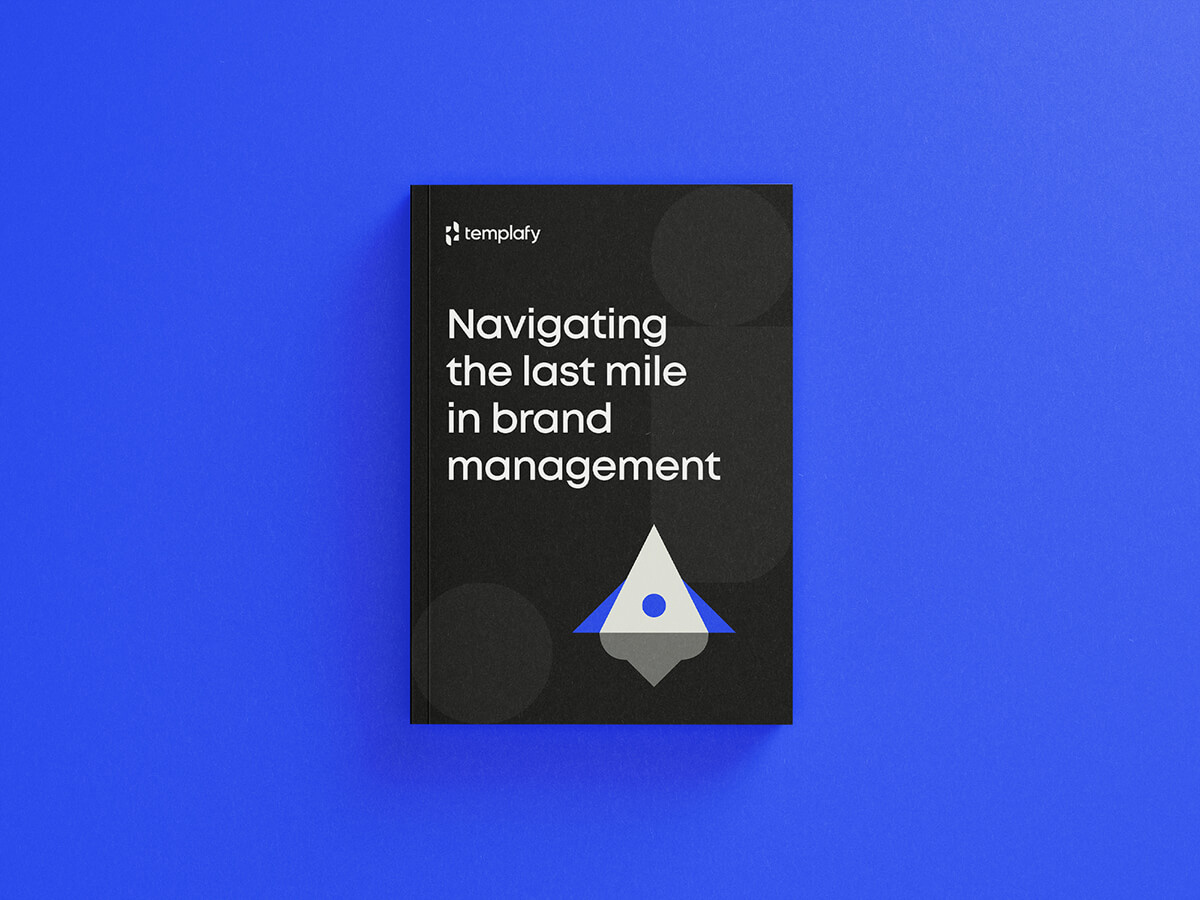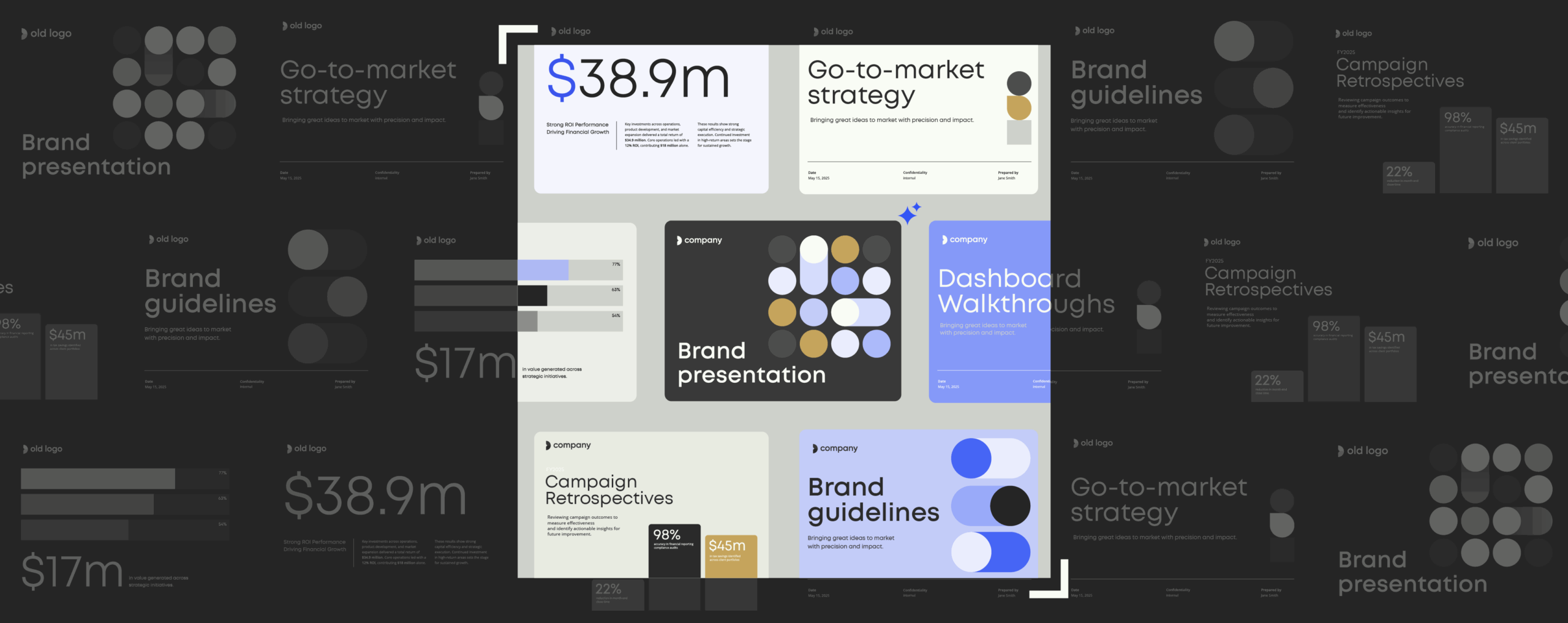How to create a global brand strategy that works

Think about brands everyone knows—Apple, Coca-Cola, Chanel, Netflix.
Whether you’re in New York, Paris, or Tokyo, these are companies that require no extra context. They’ve mastered the art of being global, and there’s a lot we can learn from them.
Building a global brand isn’t just about sticking your logo on every corner of the world. It’s about understanding what makes people tick in different cultures, finding common ground, and staying true to your core identity. And, of course, doing all of this while ensuring thousands of employees don’t accidentally go rogue on your brand vision (because out-of-date, off-brand content can undo years of hard work).
So, how do you balance local relevance with global consistency? What exactly is global branding, and how can you create a strategy that stands the test of diverse markets and evolving trends? Let’s dive in.
What is global brand management?
Effective global brand management is what enables business to succeed on an international stage. Here’s why it matters:
- Greater trust and credibility: A well-managed global brand instills confidence among consumers and partners, making your brand a trusted resource.
- Global consistency in messaging: Maintaining a unified voice reinforces your brand’s identity, ensuring that every market understands what you stand for.
- Enhanced brand loyalty: Customers feel more loyal to a brand when they experience the same quality and values, no matter where they are.
- Competitive advantage: Global brand management ensures you stand out in busy markets by projecting a strong and recognizable identity.
- Optimized operations: Centralized brand management simplifies processes, reduces costs, and ensures everyone—from local teams to external agencies—works with the same resources and guidelines.
A cohesive global brand isn’t just about appearances. It’s about aligning your company’s vision, values, and operations to create a seamless experience for customers worldwide. Without it, businesses risk losing credibility, loyalty and relevance.
Challenges of going global
While the benefits are clear, building a global brand comes with its fair share of challenges.
Navigating subtle cultural differences
What resonates in one country may completely miss the mark in another. Colors, symbols, or phrases can hold drastically different meanings across cultures. Different markets have their own traditions, preferences, and sensitivities, which means it’s always important to conduct thorough cultural research before launching campaigns or entering new regions.
Overcoming the language barrier
Translating content isn’t just about swapping words. Missteps in localization can lead to confusing or even offensive messaging. For example, simple slogans can lose their impact or gain unintended meanings when translated without cultural insight.
Taking care of local regulations
Every region has its own set of laws governing advertising, trademarks, and data privacy. Failure to navigate these rules can lead to fines, lawsuits, or damaged reputations. A thorough understanding of local regulations is non-negotiable.
Knowing when to flex vs. protect the brand
Striking the right balance between a unified global identity and local adaptation is tricky. An overly rigid approach can make a brand seem out of touch, while straying too far from its core can dilute its identity.
Managing complex operations and logistics
Managing a global brand requires seamless coordination across teams in different time zones, languages, and cultures. Without the right tools and communication channels, operations can become inefficient and fragmented.
Building global employee alignment
Ensuring that employees worldwide understand and embody the brand’s vision is a constant challenge. Misaligned messaging or off-brand behavior from employees can undermine global efforts, making training and internal resources a top priority.
Additional content
How to navigate the last mile in brand management
Get brand activation solutions and branding strategies that cut through the noise and deliver value in today’s new era.


Case study: PANDORA Jewelry
PANDORA is known around the world for its elegant and customizable jewelry. With operations in over 100 countries and thousands of points of sale, the company’s rapid global growth brought new challenges, especially when it came to maintaining a consistent brand identity across all its locations.
Brand managers began noticing issues with employees using off-brand materials, like outdated logos and mismatched fonts, in their stores and communications. That’s where Templafy stepped in. By centralizing content creation, Templafy provided PANDORA employees with easy access to up-to-date, brand-compliant templates and assets, making sure they could quickly find the right tools to create on-brand materials.
With seamless integration into PANDORA’s existing software, including its Digital Asset Management system, employees could access everything they needed directly within Microsoft Office programs. If someone tried to use an outdated image or the wrong font, Templafy flagged the error and suggested the correct replacement.
This solution didn’t just save time—it strengthened PANDORA’s global brand. Brand managers could roll out updates, like seasonal campaign materials or new marketing visuals, with the click of a button, ensuring every store worldwide was always aligned with the latest brand objectives. By simplifying and automating brand compliance, Templafy helped PANDORA maintain its reputation for quality and consistency on a global scale.
Airbnb’s global brand strategy
Globally, the variation in what people believe in or are motivated by is almost endless. So how can company content remain relevant and consistent at the same time? Airbnb, valued at $70 billion as of 2024 with operations in as many as 220 countries and regions, has a global brand strategy that offers some answers.
Airbnb’s global brand strategy centers on one key idea: the brand thinks, acts, and behaves like a global citizen. As a starting point, this means speaking new localized languages to be able to communicate effectively in different environments. To provide content in more than 26 different languages, Airbnb uses a highly sophisticated translation management tool that ensures the brand’s content is accessible to as many people as possible.
Breaking down language barriers with advanced tech isn’t the only smart move in this industry disruptor’s global brand strategy. Airbnb also uses local insights and key cultural movements that speak to native populations. In the lead-up to the legalization of same-sex marriage in Australia in December 2017, Airbnb used its “Belong Anywhere” tagline to launch the “Until We All Belong” campaign, a series of online and print adverts that raised awareness for the need to support the pending marriage equality bill.
Speaking directly to its Australian followers, the campaign simultaneously emphasized Airbnb’s brand value of belonging, as well as providing a new platform for its global brand visuals.
Adapting brand content with context is integral to Airbnb’s international branding strategies and competitive advantage. Whether shining a light on local hosts around the world or publishing travel guides for different target audiences, this approach contributes to how Airbnb achieves worldwide appeal and grows its global brand value at the same time.
branding
Top four strategies for managing a global brand
- Balance global consistency with local relevance
- Use global campaigns with a local twist
- Invest in the right tools for brand consistency
- Prioritize employee training
Can’t-miss branding tips
Learn how to keep your brand consistent. Get ideas and examples to help your team create on-brand work with less effort.
1. Balance global consistency with local relevance
To thrive globally, your brand needs to maintain its core identity—values, mission, and visual elements—while allowing local teams to adapt your products, services, and messaging for their own audiences.
Starbucks is a good example. No matter where you are in the world, you can always order Starbucks’s staple drinks. But the coffee chain also tailors its menu to offer local favorites, like a maple-infused latte in Canada or a red bean Frappuccino in China.
2. Use global campaigns with a local twist
You’ve invested heavily in your global campaigns, so instead of starting from scratch in new markets, it’s worthwhile to infuse what works best for your brand with a bit of local flavor.
Nike’s iconic “Just Do It” campaign is a great example. While the slogan remains consistent worldwide, the company partners with local athletes and influencers to make the message resonate in specific markets.
3. Invest in the right tools for brand consistency
Ensuring everyone in the company uses your brand consistently is one of the greatest challenges for any global organization. Templafy helps by providing tools that make it easy to manage, distribute, and access brand-compliant templates, logos, and assets.
For example, after a global rebrand, the consultancy ERM was able to streamline its brand communication with Templafy’s centralized content library, enabling employees worldwide to access the latest branded materials.
4. Prioritize employee training
Your employees are the face (and brains) of your brand. Equip them with the tools and knowledge they need to represent your brand consistently.
Ramboll, a global engineering consultancy, partnered with Templafy to align its 16,000 employees with its brand guidelines, ensuring consistency across 35 office locations.
additional content
Establishing brand consistency after global acquisitions with ERM
Discover how ERM transitioned acquired brands into their portfolio to boost their overall brand reputation and impact.
Building your roadmap to global brand success
Step 1: Define your core brand identity
Clearly lay out your brand’s values, mission, and visual identity. These elements are what remain consistent across all markets.
Step 2: Research local markets
Understand the cultural, linguistic, economic, and legal nuances of each target market. This insight will guide your localization strategy.
Step 3: Develop global guidelines
Create comprehensive brand guidelines that outline how to use logos, fonts, colors, and messaging. Ensure these are easily accessible to all teams.
Step 4: Empower local teams
Give local teams the flexibility to adapt campaigns while staying true to the brand’s core identity. Provide them with the tools, training, and guidance needed to succeed.
Step 5: Monitor and adapt
Use analytics to track the performance of your global campaigns. Be ready to adjust your strategy based on what works best in each market.
Turn your strategy into success with the right tools
Even the best strategies can fall short without proper management. Building and maintaining a strong global brand requires more than just vision—it takes effective execution across all teams and markets. To achieve that, you need the right tools to ensure consistency, adaptability, and efficiency.
Your employees on the ground are your brand’s greatest asset. They’re the ones who understand the local culture, communicate your brand’s message, and interact with your audience daily. But even the most skilled teams need the right support. Providing them with tools to create consistent, on-brand materials ensures that your strategy doesn’t just look good on paper—it works flawlessly in every market.
By offering centralized tools for content creation, brand compliance, and real-time updates, Templafy empowers your team to maintain consistency while adapting to local needs. Take the first step toward turning your brand strategy into a success story —get a demo today.



